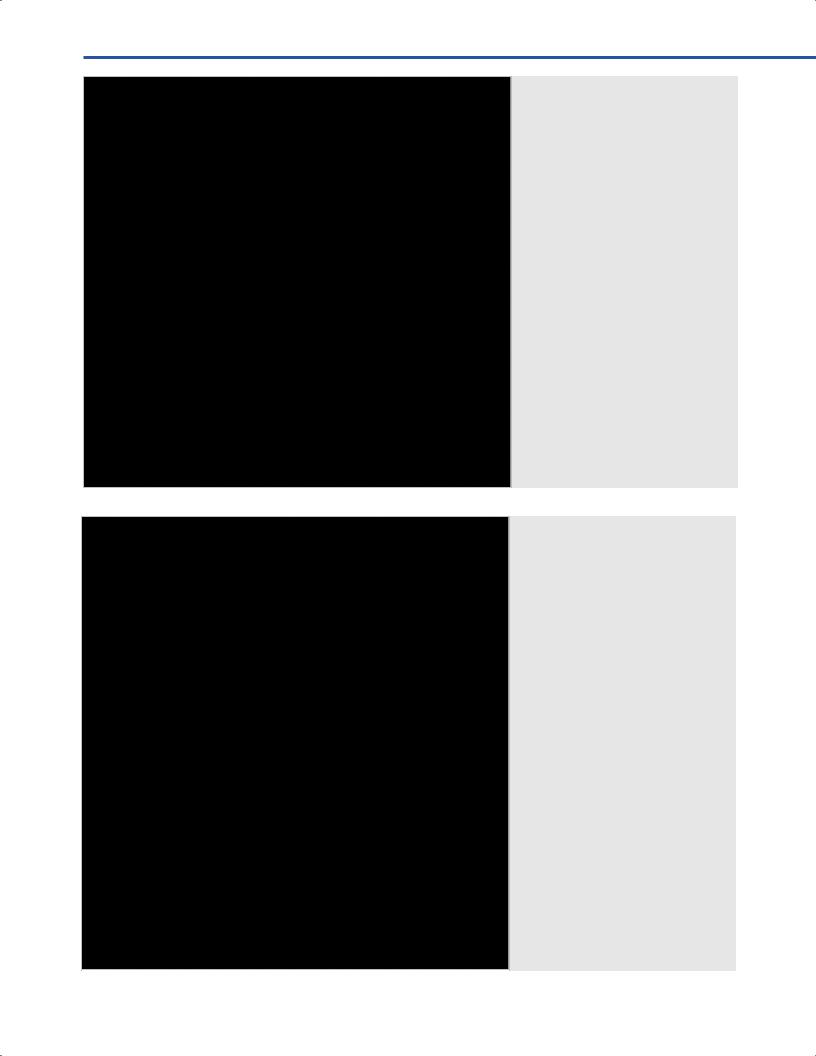
- •Operative Cranial Neurosurgical Anatomy
- •Contents
- •Foreword
- •Preface
- •Contributors
- •1 Training Models in Neurosurgery
- •2 Assessment of Surgical Exposure
- •3 Anatomical Landmarks and Cranial Anthropometry
- •4 Presurgical Planning By Images
- •5 Patient Positioning
- •6 Fundamentals of Cranial Neurosurgery
- •7 Skin Incisions, Head and Neck Soft-Tissue Dissection
- •8 Techniques of Temporal Muscle Dissection
- •9 Intraoperative Imaging
- •10 Precaruncular Approach to the Medial Orbit and Central Skull Base
- •11 Supraorbital Approach
- •12 Trans-Ciliar Approach
- •13 Lateral Orbitotomy
- •14 Frontal and Bifrontal Approach
- •15 Frontotemporal and Pterional Approach
- •16 Mini-Pterional Approach
- •17 Combined Orbito-Zygomatic Approaches
- •18 Midline Interhemispheric Approach
- •19 Temporal Approach and Variants
- •20 Intradural Subtemporal Approach
- •21 Extradural Subtemporal Transzygomatic Approach
- •22 Occipital Approach
- •23 Supracerebellar Infratentorial Approach
- •24 Endoscopic Approach to Pineal Region
- •25 Midline Suboccipital Approach
- •26 Retrosigmoid Approach
- •27 Endoscopic Retrosigmoid Approach
- •29 Trans-Frontal-Sinus Subcranial Approach
- •30 Transbasal and Extended Subfrontal Bilateral Approach
- •32 Surgical Anatomy of the Petrous Bone
- •33 Anterior Petrosectomy
- •34 Presigmoid Retrolabyrinthine Approach
- •36 Nasal Surgical Anatomy
- •37 Microscopic Endonasal and Sublabial Approach
- •38 Endoscopic Endonasal Transphenoidal Approach
- •39 Expanded Endoscopic Endonasal Approach
- •41 Endoscopic Endonasal Odontoidectomy
- •42 Endoscopic Transoral Approach
- •43 Transmaxillary Approaches
- •44 Transmaxillary Transpterygoid Approach
- •45 Endoscopic Endonasal Transclival Approach with Transcondylar Extension
- •46 Endoscopic Endonasal Transmaxillary Approach to the Vidian Canal and Meckel’s Cave
- •48 High Flow Bypass (Common Carotid Artery – Middle Cerebral Artery)
- •50 Anthropometry for Ventricular Puncture
- •51 Ventricular-Peritoneal Shunt
- •52 Endoscopic Septostomy
- •Index

22 Occipital Approach
Alan Siu, Filippo Gagliardi, Cristian Gragnaniello, Pietro Mortini, and Anthony J. Caputy
22.1 Introduction
The medial occipital approach and its further paramedian extension provide access to pathologies involving the occipital region, ranging from dural-based to intraparenchymal lesions, as well as pathologies involving the posterior aspect of the interhemispheric fssure.
22.2 Indications
•Occipital convexity meningiomas.
•Small posterior tentorial meningiomas.
•Occipital parenchymal lesions.
22.4 Skin Incision (Fig 22.1)
•Horseshoe incision
○Starting point: The starting point is located on the midline at the inion.
○Course: Incision runs upward, progressively turning frst laterally and then inferiorly in a U-shaped fashion.
○Ending point: Incision line ends just posterior to the mastoid.
•Linear incision
Linear incision might be placed along the midline or laterally, parallel to the midline, according to the pathology, which must be treated, tailoring the length of the incision accordingly.
22.3 Patient Positioning
•Position: The patient is positioned prone, and the head is fxed with a Mayfeld head holder.
•Body: The bed is placed in reverse Trendelenburg position and knees are fexed. The shoulders are tucked against the body.
•Head: The head is slightly fexed, with two-fnger breadths from chin to sternum and it can be either placed in neutral position, or slightly turned laterally, according to the location of the pathology, which must be treated.
•In the neutral position, the inion should be the highest point of the surgical feld.
22.4.1 Critical Structures
•Occipital artery.
•Greater occipital nerve.
22.5 Soft Tissue Dissection (Figs. 22.2, 22.3)
•Myocutaneous level
○Muscles are incised according to the skin incision.
○A myocutaneous fap is raised.
Fig. 22.1 Skin incision, which starts at the inion.
Abbreviations: IL = incision line; IN = inion; LE = left ear; M = midline; RE = right ear.
133

III Cranial Approaches
Fig. 22.2 Sk
Abbreviations: IL = incision line; IN = inion;
LE = left ear; P = pericranium; RE = right ear;
SF = sk
Fig. 22.3 Pericr ted to expose the skull, composed of the occipital and parietal bones. The lambdoid suture is also seen.
Abbreviations: IN = inion; LS = lambdoid suture; P = pericranium; LE = left ear;
OB = occipital bone; OPS = occipito-parietal suture; PB = parietal bone; RE = right ear; SF = sk
134

22 Occipital Approach
•Periosteum Level
○A periosteal fap can be raised separately and preserved for further reconstruction.
22.6 Craniotomy (Fig. 22.4)
22.6.1 Median occipital approach
•Burr holes
○I: The frst burr hole is placed lateral and superior to the transverse sinus.
○II: An optional lateral burr hole can be placed on the parietal bone.
○III: Inferior aspect of the superior sagittal sinus.
○IV: Superior aspect of the superior sagittal sinus.
•Cuts
○I and II: The frst and second cuts should be directed from the holes previously made on the midline, to the lateral one.
○III: The last cut is performed on the midline, just over the superior sagittal sinus.
22.6.2 Paramedian Occipital Approach
•Burr holes
○I: The frst burr hole is placed at the lateral aspect of the planned craniotomy.
○II and III: The second and third burr holes are made paramedian, along the median margin of the planned craniotomy.
•Cuts
○I and II: The frst and second cuts should be directed from the medial holes to the lateral one.
○III: The last cut is performed parallel to the midline, connecting the paramedian holes.
•Craniotomy landmarks for both the variants
Anatomical landmarks which must be taken into consideration in designing the craniotomy are as follows:
○Medially: Midline, corresponding to the superior sagittal sinus.
○Inferiorly: Just above the transverse sinus.
○Superiorly: Lambdoid suture.
○Laterally: Occipito-parietal suture.
Fig. 22.4 Burr holes are placed in the order demarcated by the numbers. Craniotomy will then follow the arrows, which are parallel to the superior sagittal and transverse sinuses. The median (MC) and paramedian (PMC) craniotomy variants are illustrated.
Abbreviations: IN = inion; LS = lambdoid suture; MC = median craniotomy; OB = occipital bone; OPS = occipito-parietal suture; PB = parietal bone; PMC = paramedian craniotomy.
22.6.3 Critical Structures
•Superior sagittal sinus.
•Transverse sinus.
22.7 Dural Opening (Fig. 22.5)
•Dura might be incised either in a curvilinear or in a cruciate fashion.
•Curvilinear incision is directed from superomedial to inferolateral, and split in half superolateral to inferomedial.
22.7.1 Critical Structures
•Superior sagittal sinus.
•Transverse sinus.
22.8 Intradural Exposure (Figs. 22.6, 22.7)
•Parenchymal Structures: The inferior, superior and lateral occipital gyrus.
•Arachnoidal layer: The posterior aspect of the interhemispheric cistern.
•Veins: The occipital cortical veins, the vein of Labbé, the vein of Trolard, the superior sagittal sinus and the transverse sinus.
•Dura mater: Tentorium and falx.
135

III Cranial Approaches
Fig. 22.5 Dural opening, which consists of a semi-lunar opening, that is then cut in a stellate fashion.
Abbreviations: LS = lambdoid suture; OD = occipital dura; OPS = occipito-parietal suture; S = skin; SSS = superior sagittal sinus; TS = transverse sinus.
Fig. 22.6 Dura re ted, which exposes the superior and inferior occipital gyri with the intervening lateral occipital sulcus. Abbreviations: DV = draining veins; IOG = inferior occipital gyrus; LOS = lateral occipital sulcus; OPS = occipito-parietal suture; SOG = superior occipital gyrus; SSS = superior
sagittal sinus.
Fig. 22.7 Retraction of the occipital lobe medially will expose the tentorium cerebelli and falx cerebri posteriorly. Care should be taken to avoid retraction of the calcarine sulcus (CS).
Abbreviations: CS = calcarine sulcus; F = falx; ICG = inferior calcarine gyrus; IOG = inferior occipital gyrus; LOS = lateral occipital sulcus; SCG = superior calcarine gyrus; SOG = superior occipital gyrus; SSS = superior sagittal sinus; T = tentorium; TS = transverse sinus.
References
1.Boockvar JA, Stiefel M, Malhotra N, Dolinskas C, Dwyer-Joyce C, LeRoux PD. Dural cavernous angioma of the posterior sagittal sinus: case report. Surg Neurol 2005; 63(2):178–181, discussion 181
2.Martin NA, Wilson CB. Medial occipital arteriovenous malformations. Surgical treatment. J Neurosurg 1982; 56(6):798–802
136
